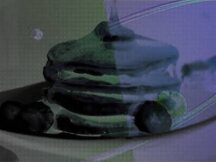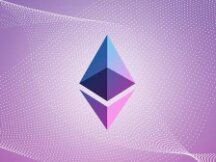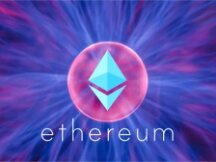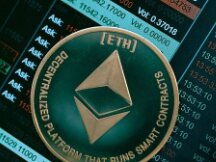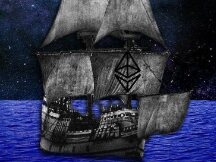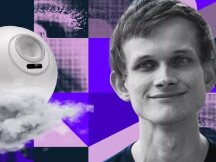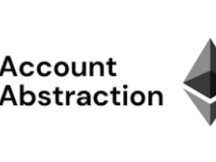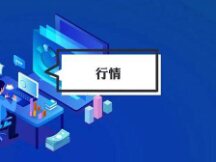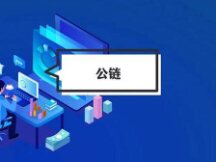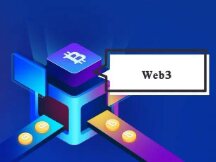L2 2021 review: rapid progress and positive results
Since the inception of Genesis Block on July 30, 2015, over 1.4 billion transactions have been made in the Ethereum network, and the daily user base is stable at over 800,000. The chain, Ethereum, also supports supports large assets such as DeFi/NFT/DAO/ for the crypto industry, and in addition to Web3 strategy, ultimately providing guidance for decentralization.
However, ETHereum 15's TPS failed to meet market needs and fuel prices increased, resulting in a one-time transfer fee of $100. For public chains, ETH2.0 and Ethereum L2 (layer 2) have this problem. However, compared to the long-term development process of ETH2.0, Ethereum L2 is a faster solution.
Among the many Ethereum L2 solutions, zkSync / StarkNet / Optimism / Arbitrum stands out, and the focus is on Lightweight Metis, the exclusive L2 game project Immutable X, and the possible larger scale L2 tov Hermez's Polygon. However, L2 improvement also has many problems, such as interference and mixed/unproductive issues present in good job assets.
How many obsolete DeFi projects will face such a change? What does the future Ethereum L2 design look like?
Ethereum L2 background development
Although now cumbersome and expensive, Ethereum is backed by strong consumers. However, if Ethereum's performance is not mentioned, it seems to be catching up with much of the rapid growth of public chain ecosystems. The rise in SOL/BSC/AVAX/Matic in the first half of 2021 is a significant example. eat
So how do you improve Ethereum performance?
We know that traditional blockchain operators need three services: bandwidth, compute, and storage, which play a huge role in the operation of blockchains such as Bitcoin and Ethereum. ) and latency (how long it takes to complete a trade), there are four ways to improve these two metrics.
The first is to use an intermediate process, the second is to use larger blocks and more market recognition, the third is to use L2, and the fourth is to select shards such as ETH2.0. not found.
First, if you choose to choose the chemical root, the protocol protection must select the rules of self-sized to contribute to business. The user will receive PayPal level transfer. The effect of the surface is the same as the chain block. However, after collection, we have changed from the sky, and we will disappear in advantage of review, and the temple check and unwanted reviews.
This will allow you to select larger blocks and generate costs faster for better performance, but will thus be more cost effective for running the node. The status of EOS shows that communities have not been able to buy root blockchains too much. Solana and Ripple, who implemented this strategy, are still looking for capital, but see far from Ethereum in terms of community and future development. Moreover, the final winner of the BTC fork tournament 2017 is also BTC, which brings speed to the community.
Third, we choose L2 as the extension. In other words, it implements a blockchain process outside of the keychain to show the counting and storage of keychains. The key string identifies the final value of the entire operation. is approved by industry L2 and now connected to zkSync / StarkNet / Optimism / Arbitrum Single head L2 adopts this concept. This solution can ensure the reliability of data on the decentralization site, and the installation complexity is lower than that of sharding (ETH2.0).
Finally, we choose the concept of sharing expansion of ETH2.0. The ETH2.0 process is divided into three stages: Phase0, Phase1 and Phase2. Now Ethereum supports level 0, i.e. the beacon chain has started, POS authentication is possible and only ETH tokens can be transferred to the address specified in the contract for the contract mining, but cannot be changed externally. , it will be a few years before ETH2.0 is released and fully operational, time away from water and cannot melt in nearby fire. Now, Polkadot / Near the public head chain has adopted a sharding architecture.
In summary, the concept of Ethereum L2 scaling is a compatible choice in three dimensions: low difficulty of development / guaranteed decentralization / guaranteed data security. If ETH2.0 is the end of the extension, L2 is the resting place to run.
Currently, major L2 expansion plans include State Channels, Sidechains, Plasma, Rollup, and Validium, but after a wide range of decisions, Rollup has been selected by the Ethereum community as the ultimate expansion technology destination, while other technologies are often used for traversal. Chain bridge solutions such as Maker DAO's DAI Capital Bridge, Connext/Celer's cBridge/Hop protocol and other network bonding solutions are widely used in state channel/sidechain/plasma technology.
If so, what is the current development of L2?
Ethereum L2 improvements:
The cost of locksmith services has increased and prices have fallen sharply.
2021 is the last year and is approaching Ethereum L2. According to data from L2BEAT, the total volume of Ethereum L2 has increased more than 100 times, from $49 million in January 2021 to $5.78 billion today, and has increased almost 18 times in course of the last six months. Among them, the Arbitrum network accounts for 44% of the total L2 volume with $2.54 billion, and the volume of the 2nd dYdX is $977 million, taking 17%, and the 3rd largest volume is Loopring, which is $583. million dollars, accounting for 10%.

In terms of project development, Ethereum L2 has developed prototypes from four L2 projects: zkSync / StarkNet / Optimism / Arbitrum, supplemented with L2 functions such as Immutable X / Hermez / Metis / Polygon.
Based on the tools used to create the project, it can be divided into ZK Rollup (ZR for short) and Optimistic Rollup (OR).Representatives of the old functions are zkSync and StarkNet. The Matter Labs team implements the zk-SNARK approach, and StarkNet is a ZR project developed by StarkWare, a proven R&D organization, using StarkEx solutions. The ultimate representatives are Optimism and Arbitrum, among them, Optimism is OR designed to be an OVM solution, and Arbitrum is developed by Offchain Labs, an Israeli group.
Other key features of L2 include Immutable X / Hermez / Metis. Among them, Immutable X, a set of GameFi applications, positions itself as Steam in the global blockchain and uses Validium technology (powered by ZR) as an extensible architecture. Hermez (acquired by Polygon for $250 million in August) also uses ZK technology, developed by Ethereum Scaling Solutions technical team iden3, based on its design prototype. Fork of Optimism, Metis recognizes its low cost, fast pace, and Ethereum-level financial security.
Of all the plans focused on the L2 concept, the most notable is Polygon. Although the industry has always been labeled "using Plasm scaling technology, which is more neutral and dangerous", Polygon relies on improving quality. This year, Polygon acquired Hermez for $250 million, eventually renaming it Polygon Hermez, becoming its fourth expansion. Polygon acquired cutting-edge technology maker Mir once again in December for $400 million, then changed its name to "Polygon Zero" and integrated it into the existing Polygon ecosystem. Since then, Polygon has integrated Plasm / Sidechain / ZK Rollup scaling technology. It has become the L2 integration with the most complete solutions in the Ethereum L2 ecosystem, and MATIC's performance in the mid-range also shows that the investment is satisfactory to solve this problem.
Extension technology and project details
Ethereum L2 has seen significant cost reductions.
Reviews from the l2fees website show that by using L2 instead of ETH/tokens/swap, you can achieve cost savings of over 90%. For example, when Polygon Hermez replaces ETH, the cost is $0.25, or 3.1% of the cost of directly using the Ethereum mainnet, and as an example, when converting ERC 20 tokens to Using Loopring, the cost is only 0.29. , 1.6% of the cost of directly using the Ethereum mainnet.
Fees for various changes in Ethereum L2
Although the development of Ethereum L2 is in full swing, there are many problems.
Ethereum L2 Problems and Solutions
Issues with Ethereum L2 include interoperability and integration, L2 interference issues, long shutdown cycle for Ethereum L2, and developer time cost moving from L1 to L2.
Let's first look at the issues of interrelationships and variables or variables in the value of assets in an OU class project in L2.
One of the best solutions based on fraud evidence, we know that removing L2 takes at least a week and connecting different L2 platforms also takes a long time, which is not good for users. users. In response to this problem, there are now operations that provide financial connectivity to the L2 network, users can connect from one L2 network to another in no time, and you need to pay a small fee when using it . Specifically, Maker DAO's DAI Capital Bridge, Connext, Celer's cBridge, Hop Protocol and others are also working to provide these solutions.
The second is the time value of the output from L1 to L2.
For most L2 applications, there is an additional development cost for application developers to move from L1 to L2, and may require specialized network development training such as Zinc by zkSync and Cairo by StarkWare. It provides some simple things to help developers easily convert their L1 application to L2 versions.
Of course, this can also be done using Celer's internal scaling method. The so-called extension means that the L1 application can be used on L2 networks without further integration. In this case, L2 is like a special set of financial instructions used to manage the distribution of money. The support groups for this site are mainly Celer's Layer2.Finance and StarkWare's DeFi Pooling solution.
Finally, let's look at the problem of switching the OR devices in the class from L2 to L1.
In the case of the Arbitrum accept OR method, due to the trading period, you must wait until the end of the trading period before withdrawing coins. The speed and timing are not the same as ZK. In response to this problem, State Channel (Connext) and the HOP protocol have also devised various solutions, for example Maker offers Capital from DAI and cBridge and DeGate from Celer as two solutions to these jobs.
In practice, ZR and OR are characterized by design patterns that create new problems when solving problems. For example, ZR accepts zero proofs and is able to interact with L1, but it is very difficult to create generic smart contracts. This is a very difficult party project, very skilled skills are required. Taking OR as an example, it uses proof of concept, which reduces fixation difficulty, but has negative side effects with L1.
In Lianwen's interview with Vitalik in the middle of this year, Vitalik said that there are currently no major problems with these stacks, but there were some issues when he said they had the biggest problem. with many layers is 2s. A little challenge. There will be 100 small issues, and if you can't fix 100 small issues, Rollup's performance and user experience will be poor. But if you can solve 50 or 80 problems out of 100, the user experience is good. An example is the bullish cumulation suppression problem discussed earlier. This means that it will take a week to withdraw the money from the project in good faith. So they want to create a liquidity provider mechanism that allows users to withdraw faster.
Vitalik also believes that if L2's TPS is too high, it will face node synchronization issues. Going forward, as the L2 ecosystem becomes successful, node synchronization issues will be determined.
Finally, Vitalik thinks that with the rise of L2 platforms, there will be more and more platforms like Optimism, Arbitrum, Loopring, etc. The current solution is to connect other L2s using DAI Capital Bridge from Maker DAO, Connext, cBridge from Celer, Hop Protocol and other protocols.
In fact, with the improvement of L2, many DeFi functions have also chosen to move to Layer 2.
DeFi in terms of L2
According to incomplete statistics, last year DEX, wallets, oracles, assets and other DeFi projects announced plans to enter L2, and Synthetix's SNX contract service launched on Optimistic Ethereum. Graph will add support for phase 2 as soon as 2021. The NFT Crypto Collectibles Aavegotchi Token GHST project has started to move to a phase 2 solution Matic Network. Oracle Chainlink has developed a 2-layer scaling solution. Derivatives trading platform dYdX plans to expand direct integration into StarkWare Layer 2, Authereum smart contract wallet adopts StarkWare Layer 2 solution to reduce exchange rate by...
DeFi can be said to be fully L2 based development like dYdX or half L2 based Uniswap v3. Going forward, all DeFi projects will be integrated into the L2 platform, with new L2 security enhancements, focusing on L2 value.
However, with the advent of NFTs in 2021, the DeFi halo will be weak. For example, from the start of 2021, the total market value of NFTs increased by more than 50 times, from over $1 billion to nearly $50 billion, while the market value of DeFi increased at lesser. 8 or more at the same time.
Ethereum L2 Development Approval 2022
First of all, Ethereum L2 coexists with many successful public chains.
Spring on L2 and other high performance L1s are coming. Ethereum is still unable to emerge from the low performance/high cost quagmire, but its green segment will grow exponentially. Solana, Avalanche, Polkadot, Mina, Difinity, and other L1s may also have major network issues.
Ethereum L2 will then integrate with ETH2.0.
Some people say Ethereum performance will be better when ETH2.0 is released in the future, is phase 2 worth it? In fact, even if ETH2.0 goes live, Ethereum will get 64 shards, performance will be improved by 64x, and TPS will reach 960. Can it meet industry needs? not sure! However, when ETH2.0 is released, Layer 2 will be added to each shard, improving Ethereum's performance. Therefore, the integration of Ethereum L2 and ETH2.0 will become different.
Finally, more Ethereum L2 will appear.
Currently, the Ethereum L2 development model is driven by four main L2 projects: zkSync / StarkNet / Optimism / Arbitrum, supplemented by L2 projects such as Immutable X / Hermez / Metis / Polygon. In the future, with the rise of the gaming/NFT/metaverse concept, Ethereum Layer 2 like Ronin will appear more often.

Scan QR code with WeChat
